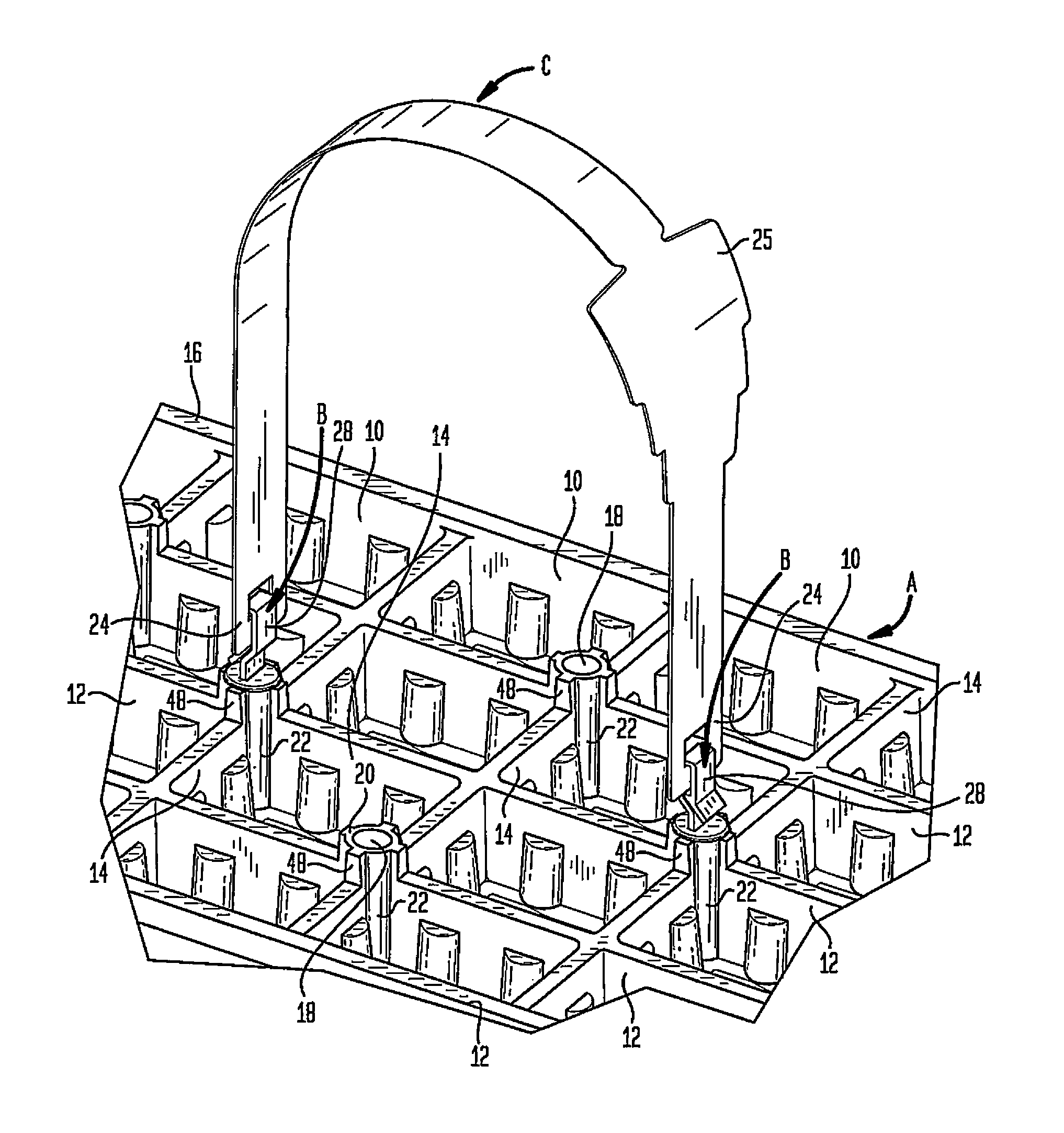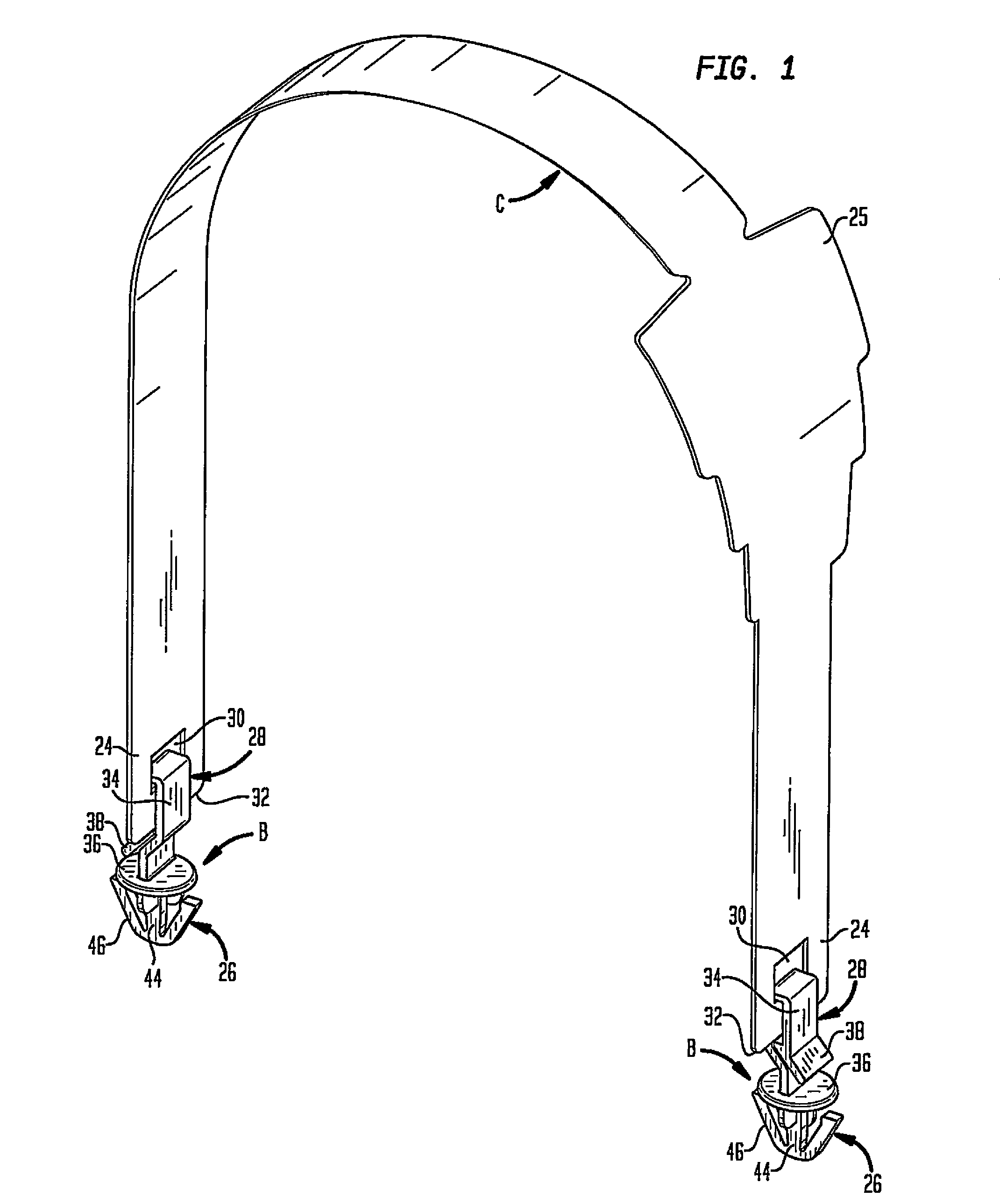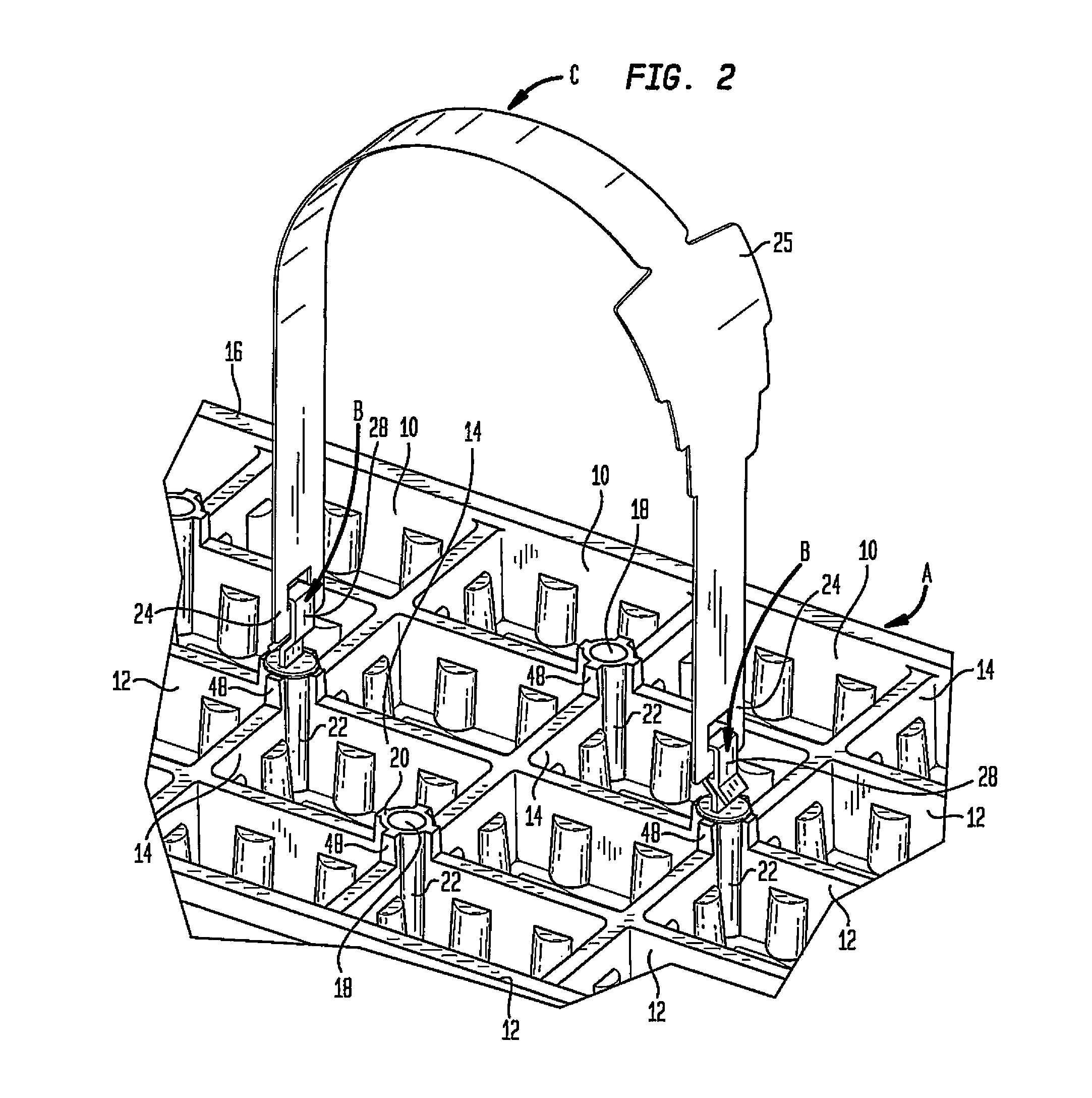Two-part handle system for horticultural tray
a horticultural tray and handle technology, applied in the field of multi-cell trays, can solve the problems of slipping and falling of the handle, unable to maintain the secure engagement of the handle in the tray opening, and unable to properly insert the end portions into the tray opening in the proper position,
- Summary
- Abstract
- Description
- Claims
- Application Information
AI Technical Summary
Benefits of technology
Problems solved by technology
Method used
Image
Examples
Embodiment Construction
[0058]FIG. 1 illustrates the two-part handle system of the present invention. FIGS. 2 and 3 respectively illustrate the two-part handle system of the present invention before and after the two-part handle system is mounted to the horticultural tray.
[0059]As seen in FIGS. 1, 2 and 3, the horticultural tray, generally designated A, is adapted to receive the two-part handle system which consists of connectors, generally designated B, and a handle, generally designated C. Handle C is mounted to tray A by two connectors B, one at each end portion of the handle.
[0060]The tray has a plurality of cells 10. Each cell 10 is adapted to receive soil (not shown) into which one or more plant seedlings will be inserted and within which the seedlings will grow. The cells of the tray are defined by orthogonal walls 12, 14 extending between the side walls 16 of the tray.
[0061]The tray is provided with a plurality of openings 18, each adapted to receive a connector B. Each tray opening 18 is formed in...
PUM
| Property | Measurement | Unit |
|---|---|---|
| flexible | aaaaa | aaaaa |
| time | aaaaa | aaaaa |
| diameter | aaaaa | aaaaa |
Abstract
Description
Claims
Application Information
 Login to View More
Login to View More - R&D
- Intellectual Property
- Life Sciences
- Materials
- Tech Scout
- Unparalleled Data Quality
- Higher Quality Content
- 60% Fewer Hallucinations
Browse by: Latest US Patents, China's latest patents, Technical Efficacy Thesaurus, Application Domain, Technology Topic, Popular Technical Reports.
© 2025 PatSnap. All rights reserved.Legal|Privacy policy|Modern Slavery Act Transparency Statement|Sitemap|About US| Contact US: help@patsnap.com



